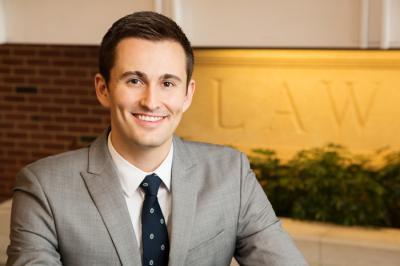CHAMPAIGN, Ill. — A law designed to combat police misconduct is hamstrung by limited resources, a lack of transparency and "political spillover" at the U.S. Department of Justice, says a recently published empirical study by Stephen Rushin, a law professor at the University of Illinois and expert in criminal law and policing.
In 1994, Congress passed 42 U.S.C. Section 14141 as part of the Violent Crime Control and Law Enforcement Act, granting the U.S. attorney general the power to initiate structural reform litigation against local police departments engaged in a pattern or practice of unconstitutional behavior. Back then, the law's passage made few headlines. But 20 years later, it has served as the basis for the Department of Justice to forcefully reform numerous large police departments across the country – including Cincinnati, Los Angeles, New Orleans, Pittsburgh, Seattle and Washington, D.C.
Nevertheless, the Justice Department has faced numerous hurdles in enforcing the statute, Rushin said.
"Historically, the federal government has only initiated an average of three formal investigations under Section 14141 per year," he said. "And the DOJ has only pursued full-scale reform against an average of about one department per year. There are around 18,000 police departments in the U.S. So it's partly an issue of scale – the Justice Department doesn't have anywhere near as much money, time and people power to truly engage in extensive oversight of all the police departments across the country. They work hard to make the most of the resources they have. But it is a messy and imprecise process."

A law designed to combat police misconduct is hamstrung by limited resources, a lack of transparency and 'political spillover' at the U.S. Department of Justice, according to a recently published article by Stephen Rushin, a law professor at the University of Illinois and expert in criminal law and policing.
(Photo Credit: L. Brian Stauffer)
Rushin's article also shows how the Department of Justice has unevenly enforced Section 14141 over time. Having looked at interview evidence, he attributes these variations in enforcement to changes in leadership and internal policies, which affected both the breadth and depth of enforcement. In some cases where systemic police misconduct did appear to exist, a phenomenon Rushin calls "political spillover" deterred the d Department from pursuing a case.
"As you might expect, politics plays a role in the willingness of the federal government to respond to claims of misconduct in police departments," he said. "Fighting police misconduct at the federal level is politically contentious. As my evidence shows, during the Clinton administration and Obama administration, the DOJ took on an aggressive posture in fighting police misconduct. During the second half of the Bush administration, they were generally uninterested in using the statute."
In the study, Rushin recommends that the Department of Justice adopt a more transparent internal case selection process to create incentives for proactive reform in local police agencies. He also recommends that state and national policymakers seek alternative routes to increase the number of structural police reform cases.
"Combined, those changes could ensure that structural police reform lives up to its potential as a transformative tool for countering police misconduct," he said.